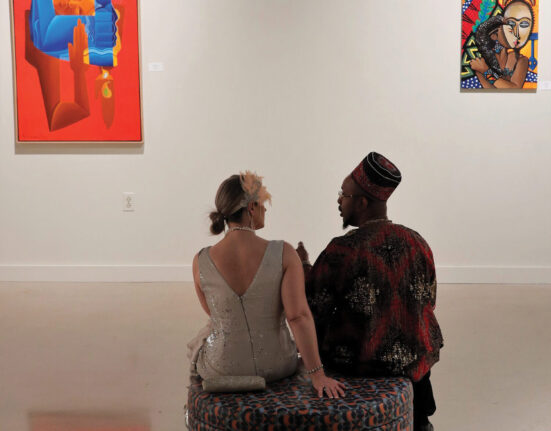Ackermann B (2021) Health issues for those participating in musical activities. In: Creech A, Hodges DA, Hallam S (eds.) Routledge International Handbook of Music Psychology in Education and the Community. Routledge. pp. 286–300
Aghaei-Jeshvaghani A, Jalalvand L, Zavari G-A(2006) A comparison of personality traits of artists and ordinary people. Radošā Personība Zinatnisko Rakstu Krājums 4:63–74
Alfarone I, Merlone U (2022) The show must go on: pandemic consequences on musicians’ job insecurity perception. Psychol Music 50(6):1976–2000. https://doi.org/10.1177/03057356221081553
Arakelyan S, Morstatter F, Martin M et al. (2018) Mining and forecasting career trajectories of music artists. In: Proceedings of the 29th on hypertext and social media. HT ’18, Association for Computing Machinery, Baltimore, MD, USA, pp. 11–19. https://doi.org/10.1145/3209542.3209554
Arnold J, Loan-Clarke J, Coombs C et al. (2006) How well can the theory of planned behavior account for occupational intentions? J Vocat Behav. 69(3):374–390
Bajrami DD, Terzić A, Petrović MD et al. (2021) Will we have the same employees in hospitality after all? the impact of COVID-19 on employees’ work attitudes and turnover intentions. Int J Hospit Manag 94:102754. https://doi.org/10.1016/j.ijhm.2020.102754
Baldin A, Bille T (2021) Who is an artist? heterogeneity and professionalism among visual artists. J Cult Econ 45:527–556. https://doi.org/10.1007/s10824-020-09400-5
Bäuerle A, Teufel M, Musche V et al. (2020) Increased generalized anxiety, depression and distress during the COVID-19 pandemic: a cross-sectional study in germany. J Public Health 42(4):672–678. https://doi.org/10.1093/pubmed/fdaa106
Betsch C, Korn L, Felgendreff L et al. (2020) German COVID-19 Snapshot Monitoring (COSMO)-Welle 10 (05.05. 2020). PsychArchives. https://doi.org/10.23668/PSYCHARCHIVES.2900. Accessed 5 April 2023
Betzler D, Loots E, Prokůpek M et al. (2021) COVID-19 and the arts and cultural sectors: investigating countries’ contextual factors and early policy measures. Int J Cult Policy 27(6):796–814. https://doi.org/10.1080/10286632.2020.1842383
Bezirk Oberpfalz (2021) Heimatpflege, Kultur & Bildung—Bezirk Oberpfalz. https://www.bezirk-oberpfalz.de/heimat-kultur-bildung. Accessed 14 May 2021
Bille T, Jensen S (2018) Artistic education matters: survival in the arts occupations. J Cult Econ 42(1):23–43. https://doi.org/10.1007/s10824-016-9278-5
Braden LE (2009) From the armory to academia: careers and reputations of early modern artists in the United States. Poetics 37(5–6):439–455. https://doi.org/10.1016/j.poetic.2009.09.004
Brivio E, Oliveri S, Guiddi P et al. (2021) Incidence of PTSD and generalized anxiety symptoms during the first wave of covid-19 outbreak: an exploratory study of a large sample of the Italian population. BMC Public Health 21(1):1158. https://doi.org/10.1186/s12889-021-11168-y
Bufquin D, Park J-Y, Back RM et al. (2021) Employee work status, mental health, substance use, and career turnover intentions: an examination of restaurant employees during covid-19. Int J Hospit Manag 93:102764. https://doi.org/10.1016/j.ijhm.2020.102764
Burch GSJ, Pavelis C, Hemsley DR et al. (2006) Schizotypy and creativity in visual artists. Br J Psychol 97(2):177–190. https://doi.org/10.1348/000712605X60030
Byrnes JP, Miller DC, Schafer WD (1999) Gender differences in risk taking: a meta-analysis. Psychol Bull 125(3):367. https://doi.org/10.1037/0033-2909.125.3.367
Caust J (2021) Sustainability of artists in precarious times; how arts producers and individual artists have adapted during a pandemic. Sustainability 13(24):13561. https://doi.org/10.3390/su132413561
Coates T (2020) As pandemic strikes, pop culture migrates to streaming sites | wired. https://www.wired.com/story/coronavirus-streaming-pop-culture/. Accessed 31 July 2020
Cobb-Clark DA, Dahmann SC, Kettlewell N (2022) Depression, risk preferences, and risk-taking behavior. J Hum Resour 57(5):1566–1604. https://doi.org/10.3368/jhr.58.1.0419-10183R1
Comunian R, England L (2020) Creative and cultural work without filters: COVID-19 and exposed precarity in the creative economy. Cult Trends 29(2):112–128. https://doi.org/10.1080/09548963.2020.1770577
Corley J, Okely JA, Taylor AM et al. (2021) Home garden use during COVID-19: associations with physical and mental wellbeing in older adults. J Environ Psychol 73:101545. https://doi.org/10.1016/j.jenvp.2020.101545
Costabile I, Kallegias A, Robins JC (2020) The Corona Decade: the transition to the age of hyper-connectivity and the fourth industrial revolution. In: Barberio, M, Colella, M, Figliola, A, Battisti, A (eds.) Architecture and design for industry 4.0. Lecture notes in mechanical engineering, 2195–4356. Springer Cham. pp. 169–183
Cross PG, Cattell RB, Butcher HJ (1967) The personality pattern of creative artists. Br J Educ Psychol 37(3):292–299. https://doi.org/10.1111/j.2044-8279.1967.tb01944.x
Csikszentmihalyi M, Getzels JW (1973) The personality of young artists: an empirical and theoretical exploration. Br J Psychol 64(1):91–104. https://doi.org/10.1111/j.2044-8295.1973.tb01331.x
Daly M, MacLachlan M, Maguire R et al. (2021) Changes in ptsd, depression, and generalized anxiety before and during the covid-19 pandemic in ireland. J Affect Disord Rep 5:100184. https://doi.org/10.1016/j.jadr.2021.100184
Daly M, Robinson E (2022) Depression and anxiety during Covid-19. Lancet 399(10324):518. https://doi.org/10.1016/S0140-6736(22)00187-8
Daniel E, Henley A, Lang M et al. (2021) Balancing precarity and resilience: the experience of the self-employment during the COVID pandemic. In: Institute of small business and entrepreneurship. The Open University, Cardiff
De Peuter G, Oakley K, Trusolino M (2023) The pandemic politics of cultural work: collective responses to the COVID-19 crisis. Int J Cult Policy 29(3):377–392. https://doi.org/10.1080/10286632.2022.2064459
dpa (2020) Clueso in großer Sorge um die Konzertbranche. Mitteldeutsche Zeitung, https://www.mz.de/kultur/clueso-in-grosser-sorge-um-die-konzertbranche-3151352 Accessed 29 January 2024
Duarte AM (2020) Artists’ precarity in the context of their social integration. In: Rachwal T, Hepp R, Kergel D (eds.) Precarious places: social, cultural and economic aspects of uncertainty and anxiety in everyday life. 2509–3266. Springer VS Wiesbaden. pp 19–39
Dupasquier S (2004) Der Arbeitsplatz des Orchestermusikers—Belastungen und Ressourcen. Master-Thesis. Universitäten Basel, Bern und Zürich
Eikhof DR (2020) COVID-19, inclusion and workforce diversity in the cultural economy: what now, what next? Cult Trends 29(3):234–250. https://doi.org/10.1080/09548963.2020.1802202
Elstad B (2015) Freelancing: cool jobs or bad jobs? Nordisk Kulturpolitisk Tidsskr. 18(1):101–124. https://doi.org/10.18261/ISSN2000-8325-2015-01-07
Flore J, Hendry NA, Gaylor A (2023) Creative arts workers during the Covid-19 pandemic: social imaginaries in lockdown. J Sociol 59(1):197–214. https://doi.org/10.1177/14407833211036757
Fram NR, Goudarzi V, Terasawa H et al. (2021) Collaborating in isolation: assessing the effects of the covid-19 pandemic on patterns of collaborative behavior among working musicians. Front Psychol 12:674246. https://doi.org/10.3389/fpsyg.2021.674246
Frick U, Rehm J (2016) Can we establish causality with statistical analysis? The example of epidemiology. In: Wiedermann, W, von Eye, A (eds.) Statistics and causality: methods for applied empirical research. Wiley series in probability and statistics, John Wiley, Hoboken, NJ, pp. 409–430
Frick Ulrich, Tallon M, Gotthardt K et al. (2021) Cultural withdrawal during Covid-19 lockdown: impact in a sample of 828 artists and recipients of highbrow culture in Germany. Psychol Aesthet Creat Arts 17(3):369–381. https://doi.org/10.1037/aca0000389
Gembris H, Heye A, Seifert A (2018) Health problems of orchestral musicians from a life-span perspective: results of a large-scale study. Music Sci. 1:1–20. https://doi.org/10.1177/2059204317739801
Gjermunds N, Brechan I, Johnsen S et al. (2020) Personality traits in musicians. Curr Issues Personal Psychol 8(2):100–107. https://doi.org/10.5114/cipp2020.97314
Godinic D, Obrenovic B, Khudaykulov A (2020) Effects of economic uncertainty on mental health in the COVID-19 pandemic context: social identity disturbance, job uncertainty and psychological well-being model. IJIED 6(1):61–74. https://doi.org/10.18775/ijied.1849-7551-7020.2015.61.2005
Gotthardt KA, Rakoczy K, Tallon M et al. (2023) Can the arts cure pandemic hearts?—cultural activity during the COVID-19 pandemic and its consequences for psychological well-being. Empir Stud Arts 41(1):3–30. https://doi.org/10.1177/02762374221103989
Götz KO, Götz K (1979) Personality characteristics of successful artists. Percept Mot Skills 49(3):919–924. https://doi.org/10.2466/pms.1979.49.3.919
Goya-Maldonado R, Keil M, Brodmann K et al. (2018) Reactivity of the reward system in artists during acceptance and rejection of monetary rewards. Creat Res J 30(2):172–178. https://doi.org/10.1080/10400419.2018.1414994
Guptill CA (2011) The lived experience of professional musicians with playing-related injuries: a phenomenological inquiry. Med Probl Perform Artists 26(2):84–95. https://doi.org/10.21091/mppa.2011.2013
Hajek A, König H-H (2021) The prevalence and correlates of probable major depressive disorder and probable generalized anxiety disorder during the COVID-19 pandemic. results of a nationally representative survey in Germany. Int J Environ Res Public Health 18(23):12302. https://doi.org/10.3390/ijerph182312302
Hajek A, Neumann-Böhme S, Sabat I et al. (2022) Depression and anxiety in later covid-19 waves across Europe: new evidence from the European COVID survey (ECOS). Psychiatry Res 317:114902. https://doi.org/10.1016/j.psychres.2022.114902
Hajek A, Sabat I, Neumann-Böhme S et al. (2022) Prevalence and determinants of probable depression and anxiety during the covid-19 pandemic in seven countries: longitudinal evidence from the European COVID survey (ECOS). J Affect Disord 299:517–524. https://doi.org/10.1016/j.jad.2021.12.029
Hall DT, Chandler DE (2005) Psychological success: when the career is a calling. J Organ Behav 26(2):155–176. https://doi.org/10.1002/job.301
Hassler M (2000) Die Musikerpersönlichkeit aus neurobiologischer Sicht. In: Behne, K-E, Kleinen, G, de la Motte-Haber, H (eds.) Musikpsychologie. Jahrbuch der deutschen Gesellschaft für Musikpsychologie. Band 15. vol Musikpsychologie Bd. 15. Hogrefe. pp. 47–59
Heikkinen M (1995) Evaluating the effects of direct support on the economic situation of artists. J Cult Econ 19(3):261–272. https://doi.org/10.1007/BF01074054
Heisler PK (1995) A theoretical comparison of certified piano teachers’ claim to professional status with the sociological definition of profession. Int Rev Aesthet Sociol Music 26(2):239–249. https://doi.org/10.2307/837002
Hertz-Palmor N, Moore TM, Gothelf D et al. (2021) Association among income loss, financial strain and depressive symptoms during covid-19: evidence from two longitudinal studies. J Affect Disord 291:1–8. https://doi.org/10.1016/j.jad.2021.04.054
Howard F, Bennett A, Green B et al. (2021) It’s turned me from a professional to a “bedroom DJ” once again’: covid-19 and new forms of inequality for young music-makers. Young 29(4):417–432. https://doi.org/10.1177/1103308821998542
Izydorczak K, Antoniuk K, Kulesza W et al. (2022) Temporal aspects of unrealistic optimism and robustness of this bias: a longitudinal study in the context of the covid-19 pandemic. PLoS ONE 17(12):e0278045. https://doi.org/10.1371/journal.pone.0278045
Jung RE, Vartanian O (eds.) (2018) The Cambridge Handbook of the Neuroscience of Creativity. Cambridge University Press. Cambridge
Kemper CJ, Beierlein C, Kovaleva A et al. (2013) Entwicklung und Validierung einer ultrakurzen Operationalisierung des Konstrukts Optimismus-Pessimismus. Diagnostica 59(3):119–129. https://doi.org/10.1026/0012-1924/a000089
Khlystova O, Kalyuzhnova Y, Belitski M (2022) The impact of the COVID-19 pandemic on the creative industries: a literature review and future research agenda. J Bus Res 139:1192–1210. https://doi.org/10.1016/j.jbusres.2021.09.062
Kok LM, Huisstede B, Voorn V et al. (2016) The occurrence of musculoskeletal complaints among professional musicians: a systematic review. Int Arch Occup Environ Health 89(3):373–396. https://doi.org/10.1007/s00420-015-1090-6
Krespi Ulgen MR, Kupana MN, Altunbek HB (2022) COVID-19 pandemic: does musicianship matter? Psychol Music 51(3):030573562211093. https://doi.org/10.1177/03057356221109322
Kreutz G, Ginsborg J, Williamon A (2009) Health-promoting behaviours in conservatoire students. Psychol Music 37(1):47–60. https://doi.org/10.1177/0305735607086047
Kriska SD, Sass MM, Fulcomer MC (2013) Assessing limitations and uses of convenience samples: a guide for graduate students. American Statistical Association. JSM Proceedings, Section on Statistical Education. pp. 2828–2834
Kuper-Smith BJ, Doppelhofer LM, Oganian Y et al. (2021) Risk perception and optimism bias during the early stages of the COVID-19 pandemic. https://doi.org/10.1098/rsos.210904
Kwon H, Kim S, Yang J (2018) What makes them dream on? the influence of social and psychological assets on young musicians’ decision to stay in the profession. Dev Soc 47(3):371–400. https://doi.org/10.21588/dns/2018.47.3.003
Lakhan R, Agrawal A, Sharma M (2020) Prevalence of depression, anxiety, and stress during covid-19 pandemic. J Neurosci Rural Pract 11(04):519–525. https://doi.org/10.1055/s-0040-1716442
Longden T, Throsby D (2021) Non-pecuniary rewards, multiple job-holding and the labour supply of creative workers: the case of book authors. Econ Rec 97(316):24–44. https://doi.org/10.1111/1475-4932.12577
Loveday C, Musgrave G, Gross S-A (2022) Predicting anxiety, depression, and wellbeing in professional and nonprofessional musicians. Psychol Music. https://doi.org/10.1177/03057356221096506
Löwe B, Decker O, Müller S et al. (2008) Validation and standardization of the generalized anxiety disorder screener (gad-7) in the general population. Med Care 46(3):266–274. https://doi.org/10.1097/MLR.0b013e318160d093
Löwe B, Kroenke K, Gräfe K (2005) Detecting and monitoring depression with a two-item questionnaire (phq-2). J Psychosom Res 58(2):163–171. https://doi.org/10.1016/j.jpsychores.2004.09.006
Ludwig AM (1992) Creative achievement and psychopathology: comparison among professions. Am J Psychother 46(3):330–354. https://doi.org/10.1176/appi.psychotherapy.1992.46.3.330
Maier C, Laumer S, Eckhardt A et al. (2015) Who really quits? A longitudinal analysis of voluntary turnover among it personnel. ACM Sigmis Database: Database Adv Inf Syst 46(4):26–47. https://doi.org/10.1145/2843824.2843827
Makridis CA (2023) The labor market returns of being an artist: evidence from the United States, 2006–2021. J Cult Econ. https://doi.org/10.1007/s10824-023-09490-x
Menger P-M (1999) Artistic labor markets and careers. Annu Rev Sociol 25(1):541–574. https://doi.org/10.1146/annurev.soc.25.1.541
Michniewicz KS, Edelman LL (2021) Underdog status yields support for musicians. Musica Sci 25(2):176–188. https://doi.org/10.1177/1029864919859625
Middleton JC, Middleton JA (2017) Review of literature on the career transitions of performing artists pursuing career development. Int J Educ Vocat Guid 17(2):211–232. https://doi.org/10.1007/s10775-016-9326-x
Miksza P, Evans P, McPherson GE (2021) Motivation to pursue a career in music: the role of social constraints in university music programs. Psychol Music 49(1):50–68. https://doi.org/10.1177/0305735619836269
Mullinix KJ, Leeper TJ, Druckman JN et al. (2015) The generalizability of survey experiments. J Exp Polit Sci 2(2):109–138. https://doi.org/10.1017/XPS.2015.19
Nettle D (2006) Schizotypy and mental health amongst poets, visual artists, and mathematicians. J Res Personal 40(6):876–890. https://doi.org/10.1016/j.jrp.2005.09.004
Park A, Guptill C, Sumsion T (2007) Why music majors pursue music despite the risk of playing-related injuries. Med Probl Perform Artists 22(3):89–96. https://doi.org/10.21091/mppa.2007.3021
Parker SL, Jimmieson NL, Amiot CE (2021) Persisting with a music career despite the insecurity: when social and motivational resources really matter. Psychol Music 49(1):138–156. https://doi.org/10.1177/0305735619844589
Parsons C (2020) Music and the internet in the age of COVID-19. Early Music 48(3):403–405. https://doi.org/10.1093/em/caaa045
Pasquinelli C, Sjöholm J (2015) Art and resilience: the spatial practices of making a resilient artistic career in London. City Cult Soc 6(3):75–81. https://doi.org/10.1016/j.ccs.2015.04.001
Poon Y-SR, Lin YP, Griffiths P et al. (2022) A global overview of healthcare workers’ turnover intention amid covid-19 pandemic: a systematic review with future directions. Hum Resour Health 20(1):1–18. https://doi.org/10.1186/s12960-022-00764-7
Pouso S, Borja Á, Fleming LE et al. (2021) Contact with blue-green spaces during the covid-19 pandemic lockdown beneficial for mental health. Sci Total Environ 756:143984. https://doi.org/10.1016/j.scitotenv.2020.143984
Primov-Fever A, Roziner I, Amir O (2020) Songbirds must sing: how artistic voice users perceive their voice in times of COVID-19. J Voice 36(4):S0892199720302782. https://doi.org/10.1016/j.jvoice.2020.07.030
Richards S, Pacella J (2022) We need to keep making stuff, regardless of what the situation is”: creativity and the film festival sector during COVID-19. Arts Mark. 13(1):20–32. https://doi.org/10.1108/AAM-11-2021-0061
Rickert DL, Barrett MS, Ackermann BJ (2015) Are music students fit to play? a case study of health awareness and injury attitudes amongst tertiary student cellists. Int J Music Educ 33(4):426–441. https://doi.org/10.1177/0255761415582343
Roese NA, Merrill J (2021) Consequences of the covid-19 lockdown in Germany: effects of changes in daily life on musical engagement and functions of music. Int J Environ Res Public Health 18(19):10463. https://doi.org/10.3390/ijerph181910463
Roy DD (1996) Personality model of fine artists. Creat Res J 9(4):391–394. https://doi.org/10.1207/s15326934crj0904_10
Rundfunk B (2021) Pianist Igor Levit zu Corona-Lockdown: “Es wird suggeriert: Kultur ist Gefahr” BR-Klassik. https://www.br-klassik.de/aktuell/news-kritik/pianist-igor-levit-interview-kritik-kultur-corona-lockdown-kunst-musik-100.html. Accessed 29 Jan 2024
Santomauro DF, Herrera AMM, Shadid J et al. (2021) Global prevalence and burden of depressive and anxiety disorders in 204 countries and territories in 2020 due to the COVID-19 pandemic. Lancet 398(10312):1700–1712. https://doi.org/10.1016/S0140-6736(21)02143-7
Schumacher J, Leppert K, Gunzelmann T et al. (2005) Die Resilienzskala—Ein Fragebogen zur Erfassung der psychischen Widerstandsfähigkeit als Personmerkmal. Z für Klinische Psychologie Psychiatr und Psychotherapie 53(1):16–39
Shaghaghi A, Bhopal RS, Sheikh A (2011) Approaches to recruiting ‘hard-to-reach’ populations into re¬search: a review of the literature. Health Promot Perspect 1(2):86–94. https://doi.org/10.5681/hpp2011.009
Sheeran P (2002) Intention—behavior relations: a conceptual and empirical review. Eur Rev Soc Psychol 12(1):1–36. https://doi.org/10.1080/14792772143000003
Sheeran P, Webb TL (2016) The intention–behavior gap. Soc Pers Psychol Compass 10(9):503–518. https://doi.org/10.1111/spc3.12265
da Silva Henrique J, Machado AF, Antigo MF (2023) Work satisfaction and job permanence in artistic careers: the case of musicians in belo horizonte, brazil. J Cult Econ 47(4):693–718. https://doi.org/10.1007/s10824-022-09467-2
Silvia PJ, Nusbaum EC (2011) On personality and piloerection: individual differences in aesthetic chills and other unusual aesthetic experiences. Psychol Aesthet Creat Arts 5(3):208. https://doi.org/10.1037/a0021914
Siqueira LTD, dos Santos AP, da Silva Vitor J et al. (2021) Vocal self-perception of singers during covid-19 pandemic. J Voice 38:96–104. https://doi.org/10.1016/j.jvoice.2021.06.032
Soto CJ, John OP (2017) The next big five inventory (bfi-2): developing and assessing a hierarchical model with 15 facets to enhance bandwidth, fidelity, and predictive power. J Personal Soc Psychol 113(1):117. https://doi.org/10.1037/pspp0000096
Spahn C, Zschocke I (2002) Selbstaufmerksamkeit als Persönlichkeitsmerkmal von Musikern. In: Behnen, K-E, Kleinen, G, de la Motte-Haber, H (eds). Musikpsychologie. Jahrbuch der deutschen Gesellschaft für Musikpsychologie. band 16: Wirkungen und kognitive Verarbeitung in der Musik. 16 Hogrefe, Göttingen, Deutschland, pp. 30–44
Spiro N, Perkins R, Kaye S et al. (2021) The effects of COVID-19 lockdown 1.0 on working patterns, income, and wellbeing among performing arts professionals in the United Kingdom (April–June 2020). Front Psychol. 11:594086. https://doi.org/10.3389/fpsyg.2020.594086
Stoff F (2021) Situation freischaffender Musikerinnen und Musiker in Berlin. Landesmusikrat Berlin. https://www.landesmusikrat-berlin.de/fileadmin/presse/2021/2021-01-25_Pressemitteilung_Umfrage_und_Konferenz_Freischaffende.pdf. Accessed 29 Jan 2024
Suarez-Fernandez S, Prieto-Rodriguez J, Perez-Villadoniga MJ (2020) The changing role of education as we move from popular to highbrow culture. J Cult Econ 44(2):189–212. https://doi.org/10.1007/s10824-019-09355-2
Sulat JS, Prabandari YS, Sanusi R et al. (2018) The validity of health belief model variables in predicting behavioral change: a scoping review. Health Educ 118(6):499–512. https://doi.org/10.1108/HE-05-2018-0027
Theodorou A, Panno A, Carrus G et al. (2021) Stay home, stay safe, stay green: the role of gardening activities on mental health during the COVID-19 home confinement. Urban Forestry Urban Green. 61:127091. https://doi.org/10.1016/j.ufug.2021.127091
Thorgersen KA, Mars A (2021) A pandemic as the mother of invention? collegial online collaboration to cope with the Covid-19 pandemic. Music Educ Res 23(2):225–240. https://doi.org/10.1080/14613808.2021.1906216
Throsby D, Zednik A (2011) Multiple job-holding and artistic careers: some empirical evidence. Cult Trends 20:9–24. https://doi.org/10.1080/09548963.2011.540809
Towse R (2001) Partly for the money: rewards and incentives to artists. Kyklos 54(2–3):473–490. https://doi.org/10.1111/1467-6435.00165
Travkina E, Sacco PL (2020) Culture shock: COVID-19 and the cultural and creative sectors. Organisation for Economic Co-operation and Development (OECD). https://apo.org.au/node/308392. Accessed 5 Apr 2023
Vaag J, Bjerkeset O, Sivertsen B (2021) Anxiety and depression symptom level and psychotherapy use among music and art students compared to the general student population. Front Psychol 12:607927. https://doi.org/10.3389/fpsyg.2021.607927
Vaag J, Bjørngaard JH, Bjerkeset O (2016) Symptoms of anxiety and depression among norwegian musicians compared to the general workforce. Psychol Music 44(2):234–248. https://doi.org/10.1177/0305735614564910
Vaag J, Sund ER, Bjerkeset O (2018) Five-factor personality profiles among Norwegian musicians compared to the general workforce. Musica Sci 22(3):434–445. https://doi.org/10.1177/1029864917709519
Vartanian O (2022) Neuroscience of artistic creativity. In: Skov, M, Nadal, M (eds.) The Routledge International Handbook of Neuroaesthetics. Routledge. pp. 507–525
Waits CR, McNertney EM (1984) An economic model of artistic behavior. J Cult Econ 8(1):49–60. https://doi.org/10.1007/BF01574442
Wang Y, Zhou W, Chang K-C (2013) Effect of decision makers’ education level on their corporate risk taking. Soc Behav Pers Int J 41(7):1225–1229. https://doi.org/10.2224/sbp.2013.41.7.1225
Warran K, May T, Fancourt D et al. (2023) Understanding changes to perceived socioeconomic and psychosocial adversities during covid-19 for UK freelance cultural workers. Cult Trends 32(5):449–473. https://doi.org/10.1080/09548963.2022.2082270
Watters JK, Biernacki P (1989) Targeted sampling: options for the study of hidden populations. Soc Probl 36(4):416–430. https://doi.org/10.2307/800824
Weinstein ND (1989) Optimistic biases about personal risks. Science 246(4935):1232–1233. https://doi.org/10.1126/science.2686031
Williams CC, Horodnic IA (2018) Evaluating the prevalence and distribution of dependent self‐employment: some lessons from the European working conditions survey. Ind Relat J 49(2):109–127. https://doi.org/10.1111/irj.12206
Yöndem S, Yöndem ZD, Per M (2017) Personality traits and psychological symptoms of music and art students. J Educ Train Stud 5(7):53–59. https://doi.org/10.11114/jets.v5i7.2431
Zhang P, Palma MA (2022) Stability of risk preferences during COVID-19: evidence from four measurements. Front Psychol 12:702028. https://doi.org/10.3389/fpsyg.2021.702028
Zwaan K, ter Bogt TFM, Raaijmakers Q (2010) Career trajectories of Dutch pop musicians: a longitudinal study. J Vocat Behav 77(1):10–20. https://doi.org/10.1016/j.jvb.2010.03.004







